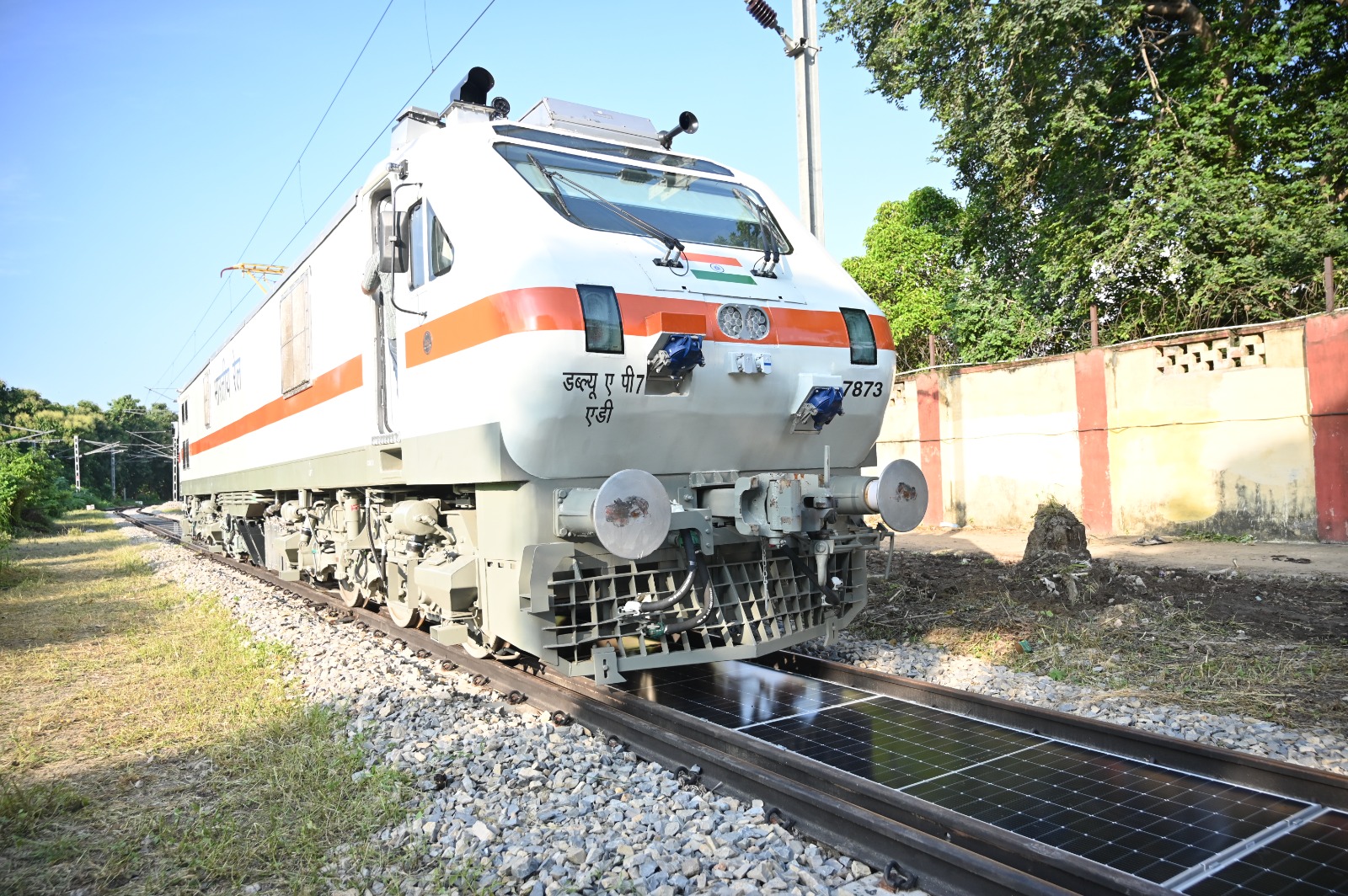In a landmark step towards clean energy and sustainable transportation, Indian Railways has launched the country's first removable solar panel system between railway tracks. This innovative initiative has been implemented at Banaras Locomotive Works (BLW) in Varanasi, marking a new chapter in India’s green energy movement.
What Happened?
On August 18, 2025, Indian Railways commissioned a 70-meter-long solar installation between tracks, equipped with 28 solar panels producing 15 kilowatt peak (kWp) of power. This is the first time in India that solar panels have been installed in such a unique and space-efficient location: directly between railway lines.
Where Is It Installed?
The installation has been carried out at Banaras Locomotive Works (BLW), a key manufacturing unit of Indian Railways located in Varanasi, Uttar Pradesh. This unit is known for its innovations and production of modern locomotives for Indian Railways.
Why Is This Important?
This project is a major milestone in the effort to reduce carbon emissions and adopt renewable energy sources. By utilizing the otherwise unused space between tracks, Indian Railways is not only saving valuable land but also contributing to a greener and cleaner future. The solar system will help power the BLW facility, reducing dependence on grid electricity and lowering operational costs.
Moreover, the panels are removable, a critical feature that allows railway maintenance teams to easily access the tracks when needed. Traditional fixed solar installations can hinder maintenance, but this design ensures flexibility and safety without compromising energy generation.
Who Is Behind the Project?
The initiative was led by the Ministry of Railways in collaboration with energy engineers at BLW Varanasi. The project showcases Indian Railways' commitment to innovation, sustainability, and smart use of technology.
“Indian Railways marks a historic first! Banaras Locomotive Works, Varanasi commissioned India’s first 70m removable solar panel system (28 panels, 15KWp) between railway tracks — a step towards green and sustainable rail transport.” — Ministry of Railways
How Does It Work?
The solar panels are fitted with epoxy adhesives and vibration-resistant rubber pads, ensuring they remain stable under the pressure of moving trains and surrounding vibrations. When maintenance work is required, the panels can be easily lifted and re-installed, minimizing delays and ensuring safety.
These panels will produce power that directly supports the internal electricity needs of BLW. Over time, this will contribute to reducing electricity bills, cutting down on fossil fuel use, and promoting clean energy in one of India’s busiest locomotive production centers.
What Comes Next?
If the pilot project at Varanasi proves successful, Indian Railways plans to replicate this model across other rail facilities in the country. The long-term goal is to achieve net-zero carbon emissions by 2030, and such smart, scalable initiatives are key to reaching that target.
India's move is being closely watched by other countries as well. Integrating renewable energy in high-traffic, land-scarce environments like railway stations and yards presents a global opportunity. Indian Railways has shown that with the right technology and commitment, clean energy solutions can be both practical and impactful.
Final Thoughts
This initiative stands as a proud moment for Indian Railways and the country as a whole. By using available space creatively and adopting sustainable practices, Indian Railways is setting an example for how public infrastructure can lead the way in climate action. The installation at Varanasi is not just about generating power – it is about generating hope for a greener tomorrow.


